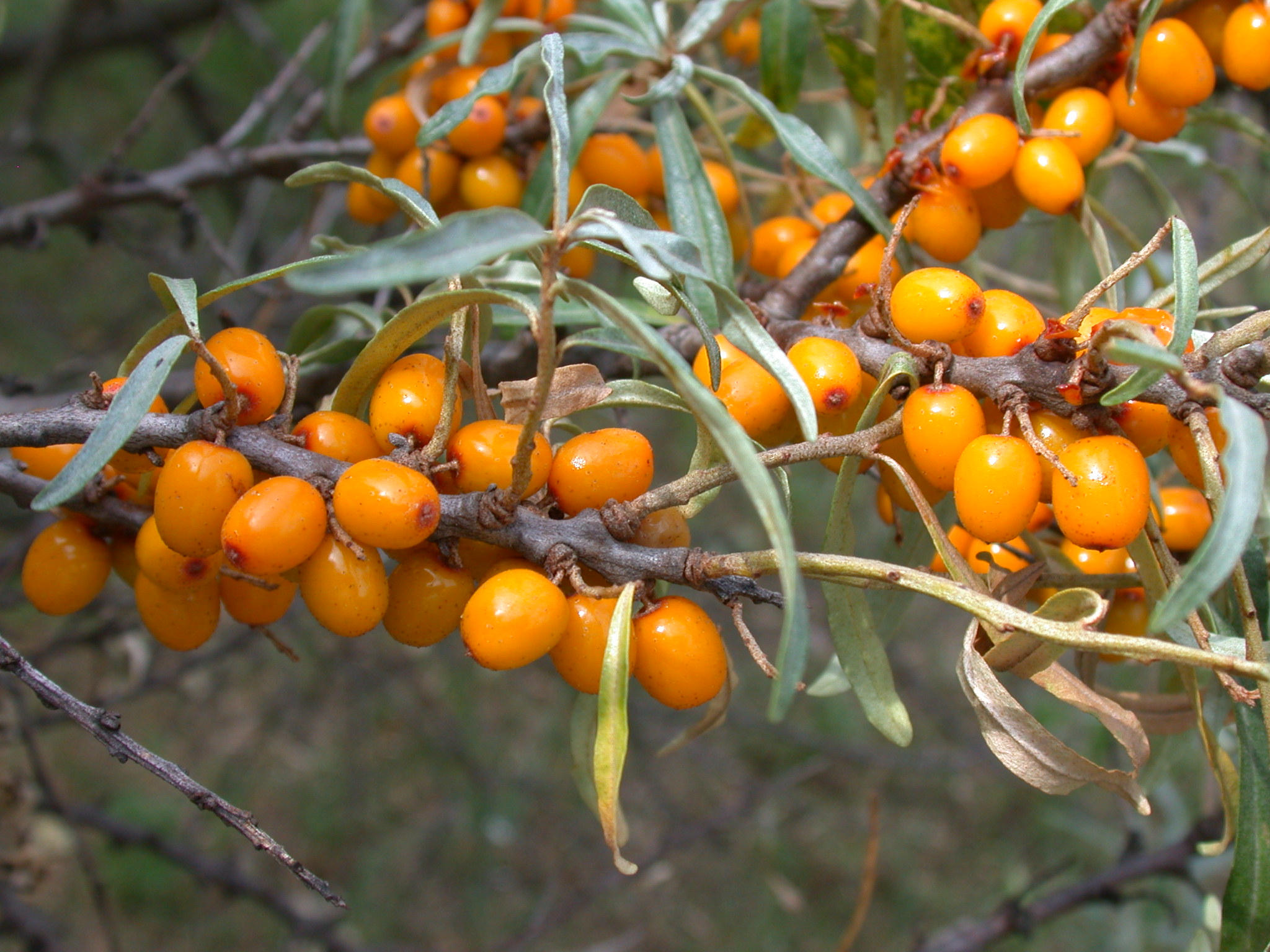Hippophaë rhamnoides L. – Common sea-buckthorn
Hippophaë rhamnoides is a deciduous shrub or tree in Elaeagnaceae family. It develops long tap-root, while the lateral roots are placed shallow underground. Shoots can occur from root sprouting too. The branches are covered with silver shiny hair and sharp thorns. The leaves are alternate, narrow, lanceolate, 4-6 cm long, 0.5-1.0 cm wide, covered with hair too. The margins are entire. Common sea-thorn is dioecious, wind-pollinated. The flowers appear on the two-year-old shoots before the foliage. The male florets are small, green, almost invisible, while the female flowers stand in thick racemes or spikes on the upper part of the shoots. The plant can be harvested from the 3rd-5th year. The fruit is orange, globular-oval with 6-8 mm diameter, ripening from the end of September. The seeds are dark brown; the thousand seed weight is 18-20 g.
Hippophaë rhamnoides is an Eurasian floral element, the species is distributed widely in the Northern hemisphere’s moderate and semi-tropical regions. The plant prefers sandy soils, riversides and seashores. In Hungary common sea-thorn is also native, the natural populations are protected. In the cultivation several Altaic cultivars are known, with big fruits size and without thorns. The drought-tolerance of the plant is very high, it can occur even on saline areas. This is caused by the plant’s developed root-system and with the symbiosis of the roots with actinomyces bacterium species. Sea-thorn needs direct sunlight, but has a very good frost-tolerance, too.
The mature fruit (Hippophaë fructus) and the fatty oil, pressed from the fruits and seeds (Oleum hippophaë) are the drugs of sea-thorn.
The Hippophaë fructus contain 75-80 % juice, with saccharides (2-4 %), organic acids (mainly malonic acid) and fatty oil (1-2 %) as main compounds. Furthermore the fruits contain vitamin C (0.15-0.3 %), carotinoides (0.01-0.015 %), vitamin B, E, F, microelements (Ca, Mg, Zu, Ti), amino acids (cysteine, phenyil-alanine). The seeds accumulate 12-15 % fatty oil, rich in unsaturated fatty acids: linolic acid and linolenic acid. The fruits oil is containing saturated fatty acids.
Sea-thorn fruit is an important source of vitamin C. The fruits are used mainly by the food industry, while the seed oil is utilized by the pharmaceutical and cosmetic industry: it is used for healing damages of outer and inner epithels, such as wounds or ulcers, or curing radiation sickness. The fruit and leaf extract has antioxidant activity.


